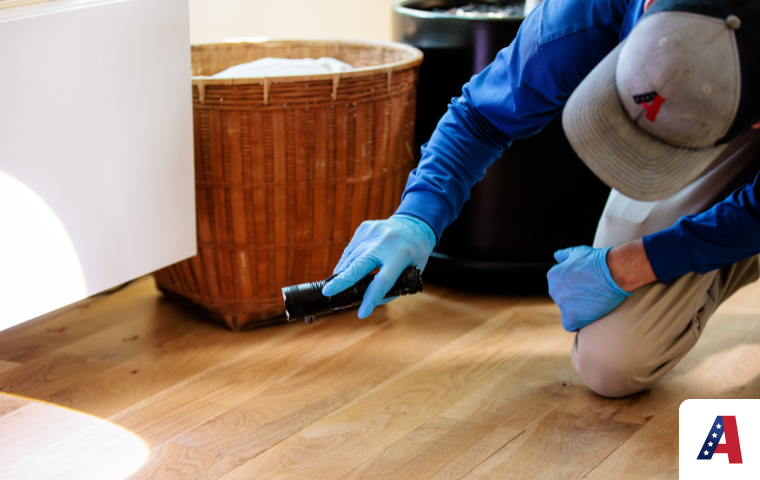What Are Silverfish?

Silverfish are appropriately named, as their entire body is covered in silver scales. These shiny scales, coupled with their quick, wiggling movements, give them a very fish-like appearance.
Silverfish measure between ½ to ¾ of an inch in length and their body is teardrop-shaped with three bristles that stick out from the ends of their bodies.
These insects require humidity to survive, but they can live up to a year without food. When they do eat, they typically feed on wallpaper and other paper products, as well as glue, fabrics, insects, pantry products, and more.
Are Silverfish Dangerous?
Silverfish do not pose health risks to humans or pets, but they can become an extreme nuisance as they may contaminate food, stain clothing, and damage paper goods. Most of the damage that silverfish cause is related to their food needs. They may get into your pantry products, destroy sections of wallpaper, or put holes in your clothing. Because they eat paper, they could damage important documents as well.
What Causes Silverfish?
Silverfish are found all across the United States. The main reasons that silverfish get into your house are typically related to the conditions outside your house. If there is a lot of moisture around the exterior of your home or if there are plenty of harborage areas, such as leaf piles, for silverfish to hide in, they’ll get close to your house. Once along the perimeter of your house, they’ll access entry points to get inside.
Typically these insects are spotted in bathrooms, attics, crawl spaces, or basements because of the high humidity these spaces offer. Their diet usually consists of anything that contains starch or polysaccharides. Things they may find around your home that have these ingredients can include, but are not limited to:
-
Photos
-
Paper
-
Glue
-
Human Hair
-
Book Bindings
-
Sugar
-
Dandruff
A home with high humidity and a steady food source is a home that will be appealing to silverfish.
We're Ready To Help
Call Our Office or Complete the Form To Get Your Customized Quote
Frequently Asked Questions
Can I Get Rid Of Silverfish Myself?
It can be very challenging to try to solve a silverfish issue on your own. The difficulty of self-removal lies with the facts that these insects are mainly active at night and they can move quickly about the premises in search of food and a place to nest.
Do-it-yourself remedies are not only time-consuming, but in most cases, also result in failure. At All-American, our exterminators are qualified professionals who, upon arriving at your home, will use proven methods to handle your silverfish issue.
How Can I Prevent A Silverfish Infestation?
Silverfish are elusive by nature and can be very difficult to manage. For this reason, many Middle Tennessee home and business owners trust All-American Pest Control to keep these pests out of their homes and facilities. Some simple steps you can take to help prevent silverfish include:
-
Routine vacuuming
-
Cleaning bathroom sinks and tubs frequently
-
Running a dehumidifier
-
Fixing leaking faucets and pipes
-
Sealing openings around your home’s exterior
-
Cleaning up debris around the exterior of your house
-
Storing potential food sources in sealed containers
If you have tried these and still have problems with silverfish, contact All-American Pest Control today!
Why Should I Choose All-American Pest Control?
All-American Pest Control is a family-owned and operated Tennessee pest control company that has served home and business owners with superior pest control since 1961. There is no secret to our success. Our goal is plain and simple: “In everything we do, we strive to deliver reliable, remarkable service while protecting our community from the harmful effects of pests!” This is why we have customers that have been with us for over 45 years.
In addition to our values and goals, we are incredibly thorough in our hiring process. Our methods of hiring ensure that our new employees will fit into our family of professionals who strive every day to keep Tennessee families safe from insects and rodents.
All-American’s silverfish control is included in our effective Perimeter Plus pest control service. We’ll provide the exterior protection your home needs so that silverfish can’t get inside. If they’ve already found their way in, this service also provides the necessary treatments to eliminate the problem.
 1426 Reviews
1426 Reviews




